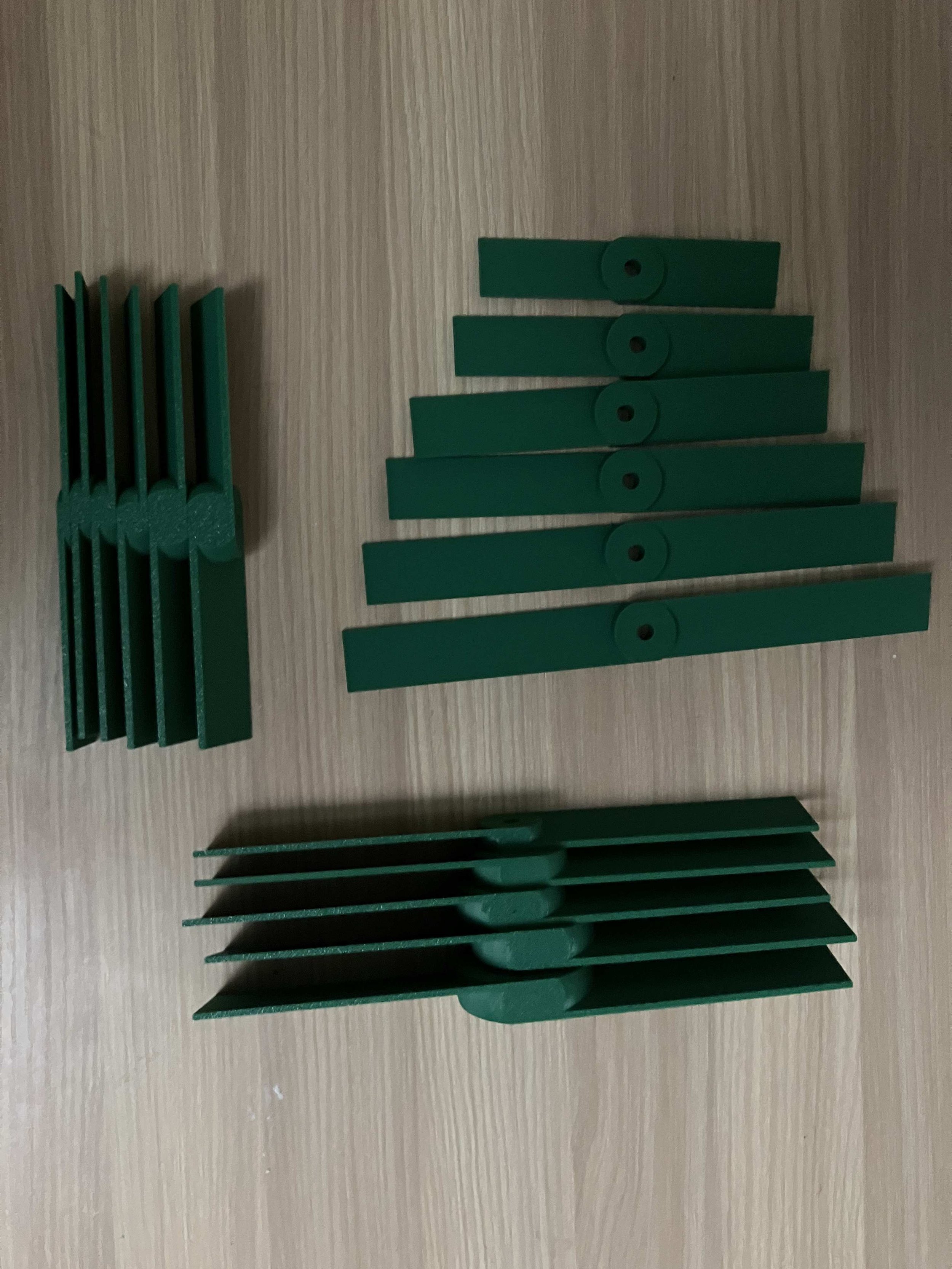Sale Offe
Safety Notes
The propellers deliberately have a simple shape to make quantification easier and are 3D printed with labels. The material is very strong and durable but is suseptible to UV light and water.
Vibration, the motors are extremely powerful and easily achieve speeds of over 10,000 RPM and generate lift that is large enough to easily measure. The practical speed limit is the level at which the base block starts moving due to vibrations and varies depending on the propeller.
Blade Shatter - The blades, base and mesh are all designed together to prevent the propellers being able to hit anything when spinning. The 6mm mesh should prevent anything accidentally getting in the path of the propeller and contain the propeller if it becomes disconnected. Safety glasses are required to mitigat the risk of blade shatter and small pieces reaching the eyes. All propellers ultimately fail as the forces exerted on them are high, the lifespan of the blades is unknown but will be longer if operated at only the speeds and durations needed to take readings.
Darkness - A phone app can turn smart phones into a useful stroboscope for measuring and setting rotation speeds, its best to choose a frequency and then fine tune the control dial and the supply voltage. This is really impressive but does require working in a darkened room.
Laser - A laster tachometer is another way to measure rotation speed and our testing found even cheap ones work really effectively and agreed with the phone strobe measurements. This is also required for accessing the highest speeds as our phone app was limited to 7800 RPM and this will help avoid mistakes due to double or quadruple counting. All risk of using these devices lies with the individual teacher’s and schools but I would recommend laser safety glasses.
Light Gates - It would be possible in principle to use a light gate to measure the rotation speed but that is not something that I’ve designed around. Care would be needed to ensure the light gate is well secured in position to avoid it falling into the spinning blades due to vibration of air gusts at high speed. A collision with a fast moving propeller would damage it and the propeller quite dramatically. I can offer advice on that approach but I can’t design a general solution for it as there are so many versions of light gates in use in schools.
Noise - there are no safety issues associated with noise as the volume is fairly modest unless excessive speeds are chosen and if that’s the case you’ll have more pressing issues anyway.
Electrical - A 12V continuously variable DC power supply is ideal, in testing the maximum current we found useful was under 3A, the motors are rated for far higher currents of up to 12A though A non-continuously variable supply would also work but that would reduce the very fine control of the rotation speeds.






